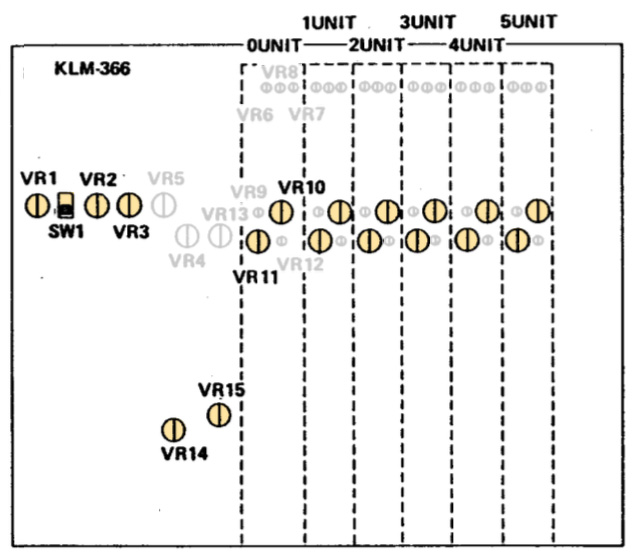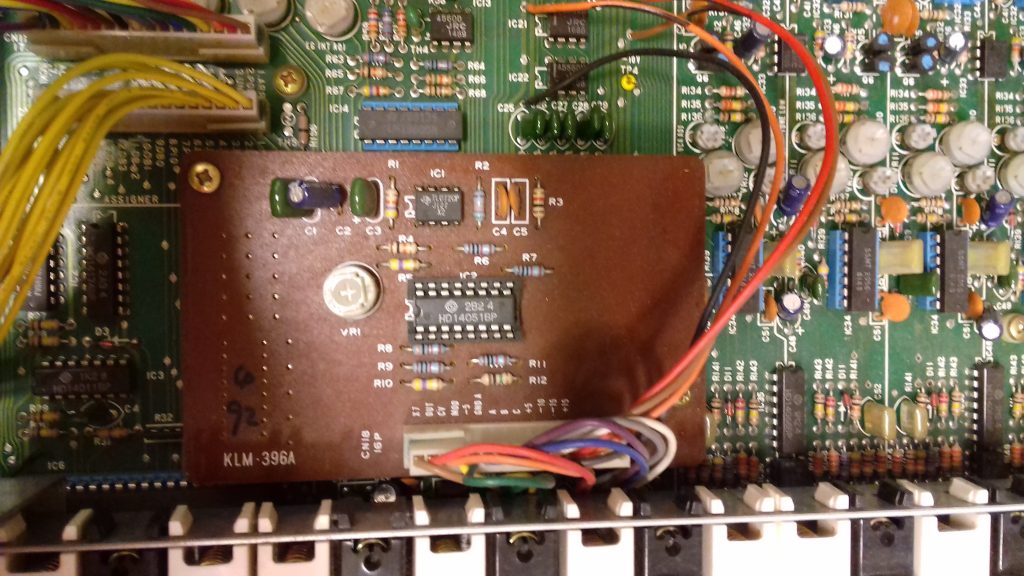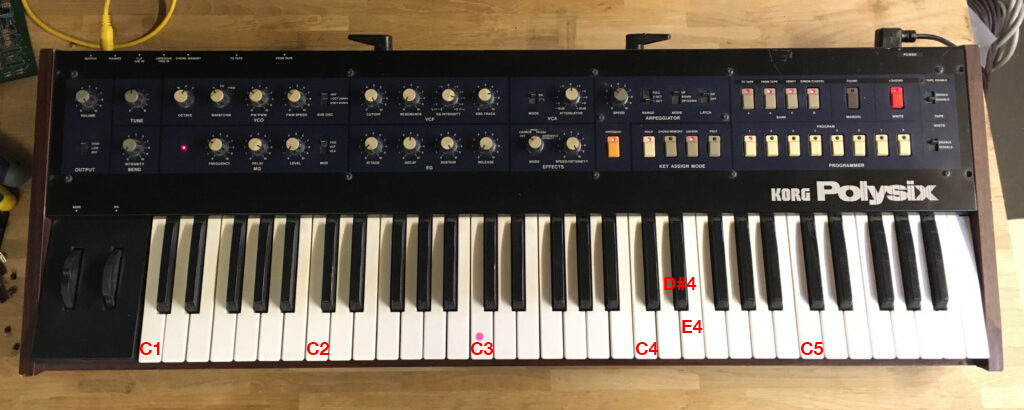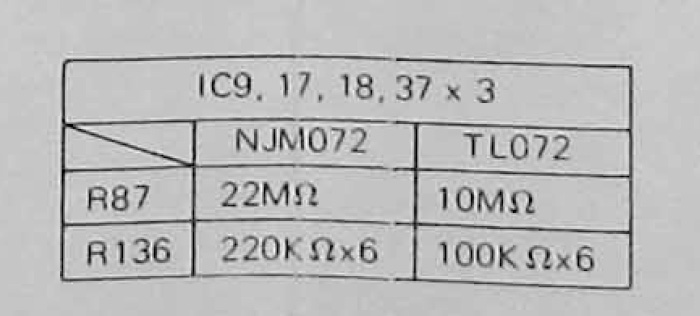The tuning of a Korg PolySix is mostly a tedious process. Let’s go in-depth to make it even worse. The tuning process described here is normally not necessary, but if you have replaced some components on the Voice PCB this might be your last resort.

Sources of information
- The PolySix Service Manual. There is some important information in there, like the fact that the PolySix is not speced to be able to tune in the highest octave. But generally the tuning instructions in the service manual should be read, understood and avoided.
- The KiwiSix manual, section 5) “PolySix Adjustments”, paragraph 9) “Voice Pitch Tuning”. It has helped me out many times. (You don’t need to have the KiwiSix upgrade installed.)
- This page. It’s for when you can’t get it right with the KiwiSix procedure.

Step-by-Step Instructions
Front Panel Preparations
- Set Waveform to Saw
- Tune Knob = Center
- Modulation Level = 0
- Bend Intensity = 0
- Move Modulation wheel to 0
- Move Pitch Bend wheel to the Center detent
Voice Board Preparations
- Everything will happen on the voice PCB (KLM-366). Pull the slide switch between VR1 and VR2 towards the rear of the PolySix (away from connector CN12). This is the ‘normal’ tuning position. The other position is for stretch tuning.
These “global” trimmers will affect all voices
- VR1 (Adj Center)
- VR2 (Tune High)
- VR3 (Tune Low)
- VR14 (D#4-E4 Adj)
- VR15 (Tune Mid)
Per-voice trimmers
- VR10 (Tune Low) * 6
- VR11 (Tune High) * 6

Note: In early production models
VR14 is not present
VR15 (Tune Mid) is called VR1 and sits on the KLM-396 daughter board

Tuning Procedure, Global + Voice 0
First adjust global trimmers together with Voice 0. Save Voices 1-5 for later. Use the LEDs on the Voice PCB to identify which voice is currently playing.
a) Set Octave to 4′ (on the front panel)
b) Hit C5 until the LED for Voice 0 is lit. Adjust VR11 to obtain C5 0 cents.
(If VR11 is far off from center: adjust VR2 (Global) Tune High a bit and try again)
c) Play C2 and adjust VR1 to obtain 0 cents for Voice 0.
Repeat (b – c) until C2 and C5 are in tune for Voice 0
d) Play C3 and adjust VR15 to obtain 0 cents (It might not be possible right now. If not, do your best)
e) Play D#4 and E4 and adjust VR14 until both are spot on. (It might not be possible right now.)
Repeat (d – e) to get C3 and D#4-E4 a bit closer to correct pitch
Repeat (a – e) until C5, C2 and C3 are good. Then go to (f).
If you can’t match C2 and C3, i.e. if step (c) and (d) seem to counteract each other, please also go to (f).
f) Set Octave to 16‘ and play C2. Adjust VR3 (Tune Low) for 0 cents. This can help with steps (c) to (d). Try to leave VR10 close to center position for Voice 0.
Repeat (a – f) until Voice 0 is in tune

Voices 1 – 5
Generally, from here on, you want to avoid changing the “global trimmers” VR1, VR2, VR3, VR14 and VR15.
h) Set Octave to 4′
Play C5 and adjust VR11 for Voice 1 – 5
i) Set Octave to 16’
Play C2 and adjust VR10 for Voice 1 – 5
Repeat (h – i) until Voice 1 – 5 are in perfect tune
Done!
Technical Notes
If you are unable to tune a PolySix, there are some components that fail more often than others in the “auto-tune” and expo converter section.
- 4051 multiplexers are always suspects
- The opto-coupler (aka “Vactrol”) HTV P1501, cannot be sourced nowadays, but might be replaced with VTL5C9 or NSL32-SR3. Due to differencies between specs, but also between individual optocouplers, other alterations may be needed in the PolySix “auto-tune” circuit. If VR15 (Tune Mid) and VR1 (Adj Center) counteract each other, so that C3 stays too sharp, and you finally hit bottom while turning VR15 clockwise, then you may need to decrease the value of R216 a bit.
- Sometimes IC17 – 19 need to be replaced. If you change IC17 and IC18 to TL072, instead of the less common NJM072, there’s a resistor change you need to perform, specified in the KLM-266 schematic, in the service manual. Don’t bother to source NJMs, the TL072 is a higher performance OpAmp.
